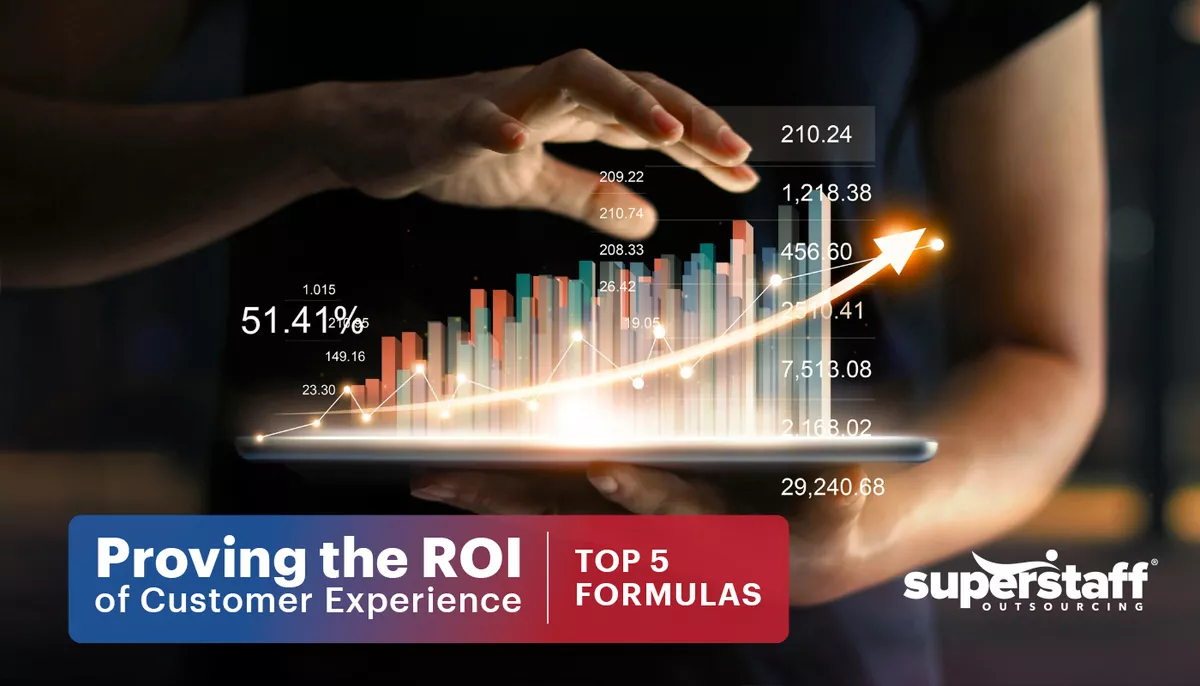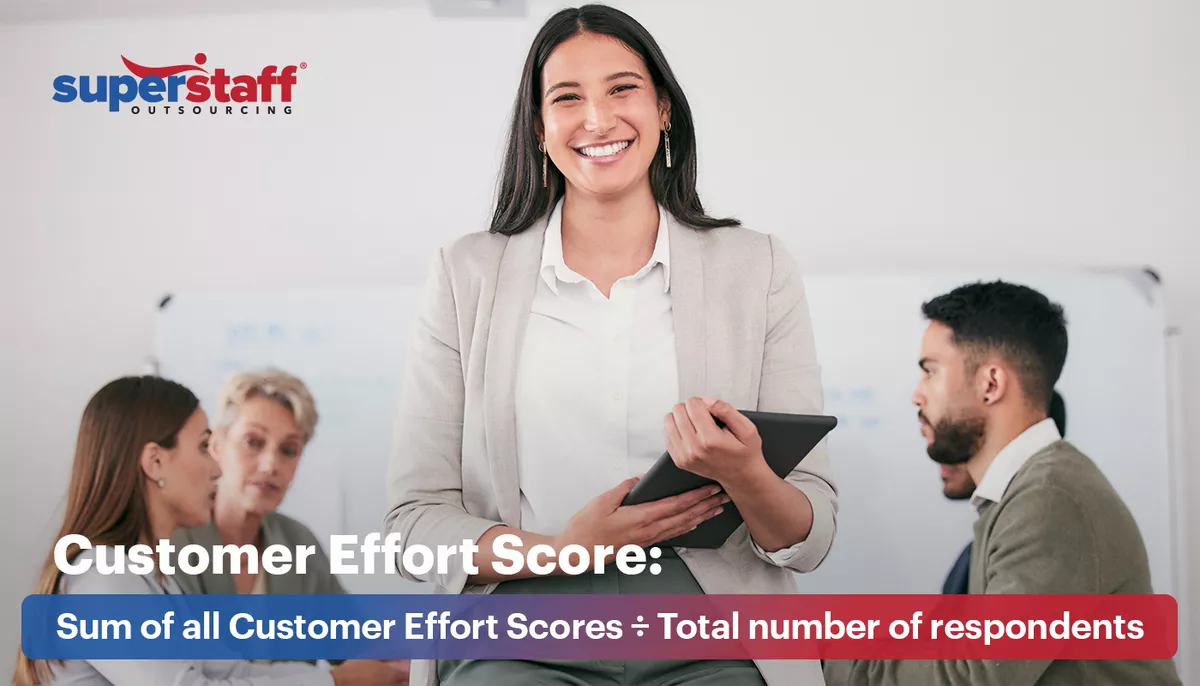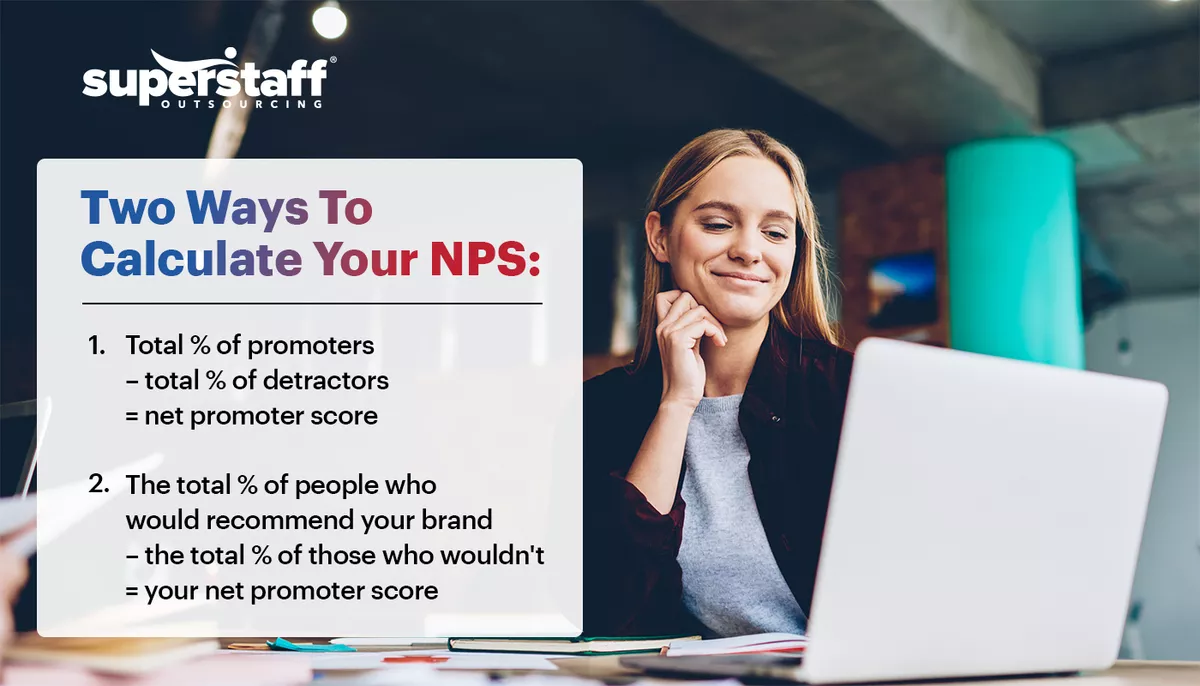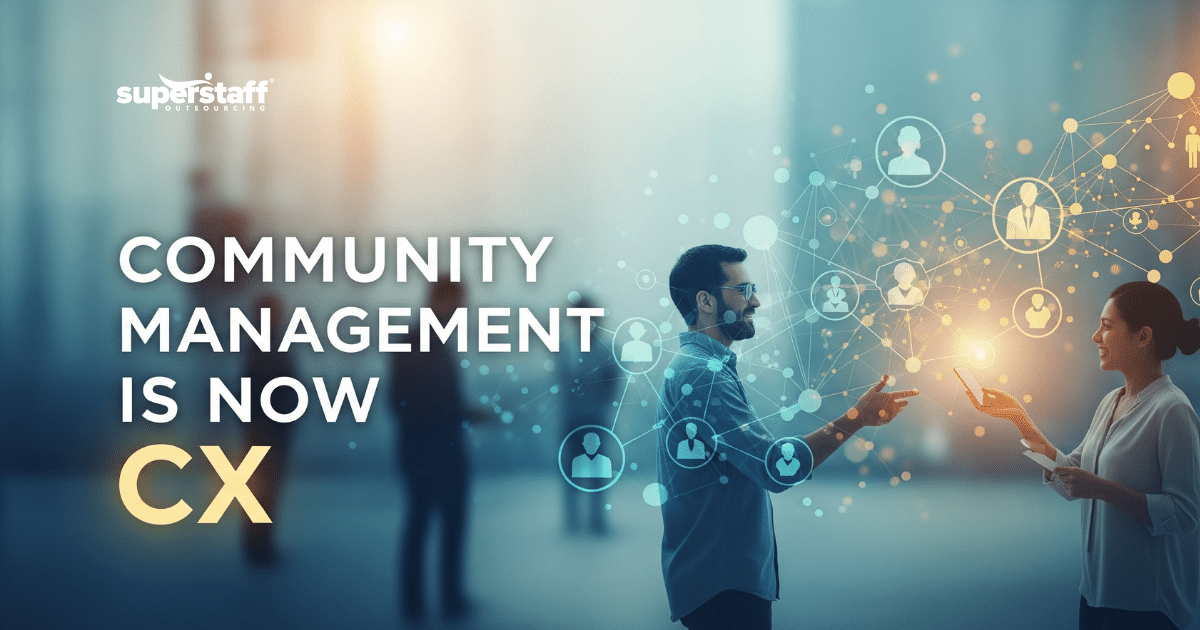
Since ROI from sales and marketing is readily measurable, it often takes center stage when measuring business success. But there’s a less tangible yet equally crucial aspect that businesses tend to overlook: the customer experience (CX).
In this cutthroat landscape, building strong and lasting relationships through quality customer experience is no longer just a sound strategy; it’s a proven recipe for success. Sadly, many leaders still fail to see its vast potential because CX is seemingly abstract. While anecdotes may offer some insight, hard data will truly drive the point for the vast return on investment (ROI) of customer experience.
How can we quantify something like experience? We have to take a step back and look for innovative solutions.
The simplest way is to track your expenses and measure the ROI on your customer service investments:
ROI = (Money Gained/Money Spent) × 100
However, while computing your net profit for CS is a critical first step, it’s not the be-all and end-all. It would be best if you still had other metrics to understand your customer service ROI better.
5 Critical Metrics of Customer Experience
Often abbreviated as CX, the customer experience is the sum of all touchpoints throughout a customer’s journey with your brand. It encompasses every aspect of the customer-business relationship, from the initial awareness stage to post-purchase tech support, focusing on creating positive, memorable, and consistent experiences that lead to customer satisfaction, loyalty, and advocacy.
Let’s take a look at these cx metrics to get a better understanding of the concept.
Customer Lifetime Value

A key indicator into the long-term impact of your CX initiatives, Customer Lifetime Value (CLV) measures the true economic worth of a well-established customer relationship. It quantifies the total value a customer brings to your business over their entire engagement by factoring in repeat purchases, referrals, and additional services.
More than just helping you estimate your profit margins, CLV helps businesses allocate resources more effectively, guiding their decisions on marketing budget, customer acquisition costs, and customer retention efforts.
This metric also provides insight into each individual customer — driving personalized experiences, which yield an impressive five to eight times return on investment and result in a sales boost of 10% or higher.
Ultimately, understanding and maximizing CLV is about building sustainable, profitable customer relationships that drive long-term success.
Customer Satisfaction Score

If CLV measures long-term relationships, Customer Satisfaction (CSAT) zooms in on specific touch points for a micro-level perspective. Typically in the form of customer surveys, this metric asks customers to rate their satisfaction on a scale — often ranging from very dissatisfied to very satisfied.
To measure it, you simply need to get the average CSAT scores from all your customers across all touch points. This gives you direct feedback on how well your service meets their expectations, helping you pinpoint areas for improvement for stronger customer relationships.
Why does your CSAT matter? For one thing, satisfied customers are not just one-time transactions, they’re brand advocates who can fuel your success with word-of-mouth referrals. High customer satisfaction scores also contribute to a strong brand reputation — attracting new customers and building trust within your existing customer base.
Customer Health Score

Going beyond just the satisfaction, the Customer Health Score is a more holistic metric that evaluates various aspects of a customer’s relationship with your business. It encompasses factors like customer usage patterns, feedback, and overall engagement.
What do businesses stand to benefit from this?
First and foremost, CHS serves as an early warning system for potential issues or opportunities with a customer, allowing you to proactively address any challenges before they escalate. This metric also enables businesses to segment their customer base based on the health (at-risk, healthy, etc) of their relationships for targeted communication and support efforts tailored to the specific needs of each segment.
Additionally, CHS fosters cross-functional alignment within the organization, ensuring that teams across sales, marketing, customer success, and product development are working together to support and nurture customer relationships.
Customer Effort Score

The Customer Effort Score (CES) measures the ease with which customers interact with your business by gauging the level of effort they have to put in to resolve an issue or complete a transaction. The more effort they put in — multiple follow-ups, multiple clicks on your User Interface (UI), — the higher your CES score.
Unfortunately, in this scenario, high scores are not a good thing.
A seamless, effortless, hassle-free experience is what you would want for this test. When customers find it easy to engage with your business, they’re more likely to be satisfied with their experience, leading to positive word-of-mouth and increased customer advocacy. Streamlining customer interactions not only benefits the customer but also improves operational efficiency, as it significantly reduces the time and resources required to address customer needs.
Net Promoter Score (NPS)

Finally for the last measure, the net promoter score (NPS) gauges the likelihood of a customer recommending your business to their own personal networks. This metric is rooted in a simple survey question: “On a scale of 0-10, how likely are you to recommend our product or service to a friend or colleague?” Respondents are categorized as one of the three:
- Promoters (9-10) – Loyal customers who are willing to advocate a brand
- Passives (7-8) – Satisfied customers but not willing to promote a brand
- Detractors (0-6) – Unsatisfied customers who are unlikely to buy from a brand again
A consistently high NPS is a powerful differentiator in a competitive market — demonstrating a strong commitment to customer satisfaction, loyalty and advocacy.
By leveraging these five key metrics, you gain perspective of the impact of your CX initiatives, empowering you to refine strategies, cultivate a customer-centric approach, and ultimately drive lasting success in a competitive business landscape.
Deliver Excellent Customer Experience
Nurturing relationships with quality customer experience can be up to seven times more cost-effective than constantly seeking out new customers. What’s more, existing customers are more likely to make repeat purchases, making them an invaluable asset to businesses. So if you look at it from an ROI perspective, you’re not just driving down the cost, you’re also driving up the profits.
- Customer-centric companies stand to earn 60% more profit compared to companies that don’t focus on their customers.
- Brands with superior CX also rake in 5.7 times more revenues compared to their counterparts that don’t prioritize CX.
- An overwhelming majority (84%) of firms that work on their CX reported a revenue spike.
With these in mind, let’s explore practical strategies to help you deliver an exceptional CX that leaves a lasting impression on your customers.

Embrace Words of Mouth (WOM) Marketing
This form of free advertising is still the most effective.
Word-of-mouth (WOM) has been a cornerstone of marketing long before the digital age. It thrived through personal conversations and recommendations. But today, with the proliferation of social media platforms, online reviews, and influencer culture, WOM marketing has become a force to be reckoned with. The reach and speed at which recommendations can now travel are unprecedented.
Check out the following statistics:
- 92% of consumers trust their family and friends’ WOM recommendations over the messages in paid ads.
- 74% of consumers rely on WOM as a key factor in their purchase.
An outsourced customer service team is a strategic way to drive positive Word-of-Mouth (WOM) referrals, as it allows businesses to tap into specialized expertise and advanced technologies, all while potentially reducing operational costs. This approach not only ensures that customer inquiries and concerns are addressed promptly, it also elevates the customer experience, leading to more positive WOM referrals.
Get Up Close and Personal
In the digital age, consumers crave experiences that resonate on a personal level, where their preferences and needs are not just acknowledged, but anticipated.
This is where hyper-personalized customer experiences come into play. Hyper-personalization goes beyond the traditional notion of personalization, as it involves a comprehensive understanding of individual customer behaviors, preferences, and motivations. It’s about creating tailored experiences that make customers feel truly understood and valued – and at its heart lies data. Advanced analytics, artificial intelligence, and machine learning empower businesses to gather and interpret customer data at an unprecedented scale.
Fortunately for businesses in this generation, 90% of customers are willing to share behavioral data in exchange for a more elevated, personalized customer experience experience. What’s more, a good 72% of consumers exclusively engage with brands that have personalized messaging.
Take a Page From Netflix and Amazon’s Playbook
Netflix is a prime example of a business that recognizes and leverages the potential of hyper-personalization. They analyze the viewing history of their customers to provide instant, tailored recommendations.
Meanwhile, Amazon stands at the forefront of the hyper-personalization revolution in e-commerce. They adeptly utilize both historical and current data to curate personalized content directly on their customers’ homepage.
However, not all businesses have the same resources as these industry behemoths. Firms that seek a competitive advantage despite limited resources can outsource. This provides access to specialized expertise, advanced technology, and scalability — all of which are crucial for delivering exceptional, tailored experiences to customers.
Prioritize High Quality Customer Service
The landscape of customer service transformed dramatically in the wake of COVID-19. What was once seen primarily as a support function has now evolved into a direct reflection of a brand’s identity and a vital marketing tool.
How can you keep pace with this transition to customer-centric service? You can start on these crucial aspects that customers care about the most:
- Speed
In today’s fast-paced digital age, swift issue resolution is paramount. To achieve this, it’s imperative to streamline your digital operations.
Equipping your customer service team with the latest technology, including artificial intelligence, empowers them to provide seamless and rapid support.
- Empathy
While speed is crucial, empathy stands as a significant differentiator in ensuring a satisfying customer experience. A recent study showed that agents who exhibit empathy drive remarkable growth (42%), surpassing even the importance of speed by 12%.
- Global Availability
As your business transcends geographical boundaries, your CX should keep pace. Providing round-the-clock assistance defies time zones and is essential for retaining a global customer base. This 24/7 availability not only caters to different time zones but also demonstrates a commitment to being there for your customers regardless of time or place.
- Omnichannel Accessibility
Customers interact with brands across all channels — be it social media, live chat, or phone. To stay competitive, you must meet them where they are. Implementing effective omnichannel strategies ensures that your brand is accessible and responsive across all platforms. If resources are a concern, partnering with a reliable customer service outsourcing provider that provides omnichannel support can bridge this gap.
- Proactive Engagement
Anticipating customer needs and addressing them before they even arise is a hallmark of exceptional customer service. Chatbots and other automated tools can play a crucial role in this aspect. They enable your support team to engage with customers in a proactive manner, providing an enhanced experience that aligns with their needs and preferences.
Get To Know Your Loyal Customers
In business, the adage “it’s cheaper to keep the old one than to find a new one” still holds true. Retaining existing customers not only drives down acquisition costs, it also unlocks a treasure trove of insights for growth.
Loyal customers represent a segment that has found exceptional value in your offerings and continues to invest in your brand over the long term. The key lies in understanding what sets them apart and how these insights can be applied to benefit your broader customer base.
By leveraging the insights gained from your high CLV customers, you’re essentially creating a blueprint for elevating the CLV of your entire customer base. What worked for your most valuable customers can be adapted and tailored to resonate with a broader audience, driving overall growth and profitability.
Elevate the Buying Experience
The buying experience is a holistic journey that a consumer embarks on, from initial brand awareness to the actual utilization of a product. It encompasses a myriad of emotions, desires, and intangible motivations that shape the customer’s interaction with your brand.
In the past, the buying experience followed a relatively linear path. However, in today’s digital age, consumers encounter a multitude of touchpoints, making the journey far more intricate and dynamic.
Every interaction with your brand, whether it’s perusing marketing materials or engaging with a customer service representative, contributes to the customer’s overall buying experience. These encounters evoke feelings and thoughts that guide them towards the next phase of their journey.
Partnering With Certified Customer Service Experts
The role of customer service has evolved from a mere support function to a powerful force driving customer reassurance and satisfaction. Recognizing the impact of your customer service team on CLV, choosing the right outsourcing partner is of paramount importance.
With service providers’ expertise, technological capabilities, cultural alignment, language proficiency, and flexibility, businesses can ensure that their customer service team continues to be the reliable “face” of their brand, now and in the future.
Maximize the ROI of Customer Experience With SuperStaff
In an era where customer experience reigns supreme, strategic outsourcing emerges as a powerful tool to enhance CX. By leveraging specialized expertise, achieving cost efficiencies, and accessing advanced technologies, businesses can elevate their customer service to new heights.
SuperStaff, with its headquarters in the Philippines (the BPO Capital of the World) offers a dedicated team of experts, ready to provide top-notch offshore solutions tailored to your business needs. Elevate your customer experience today by partnering with us. Get in touch with our team and embark on a journey towards exceptional customer satisfaction!






